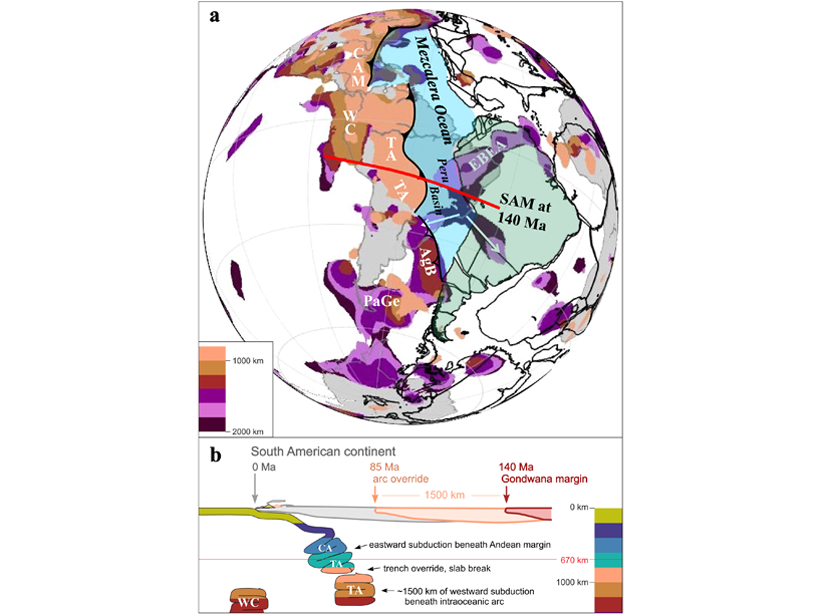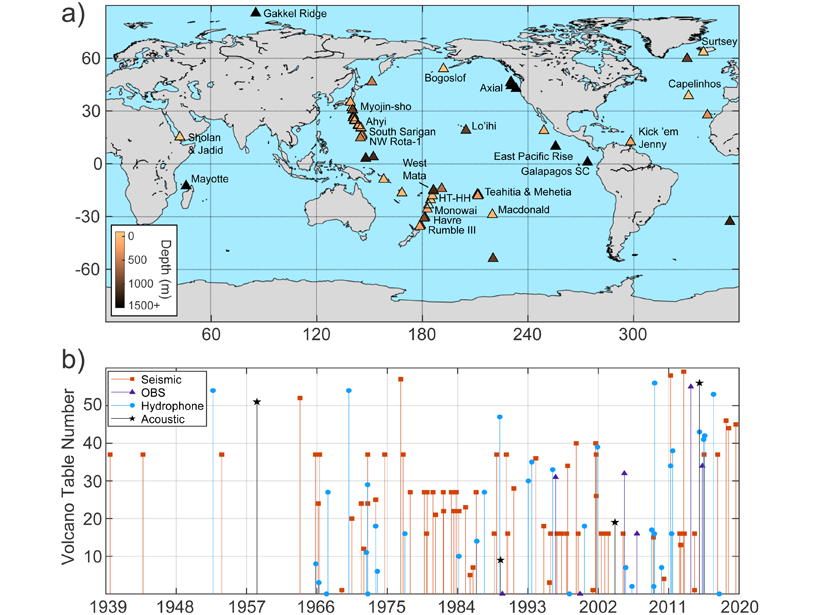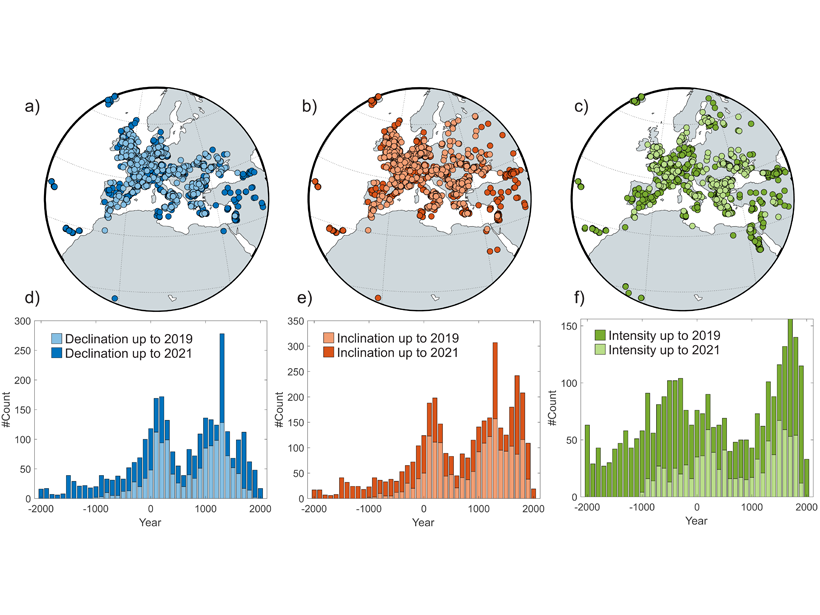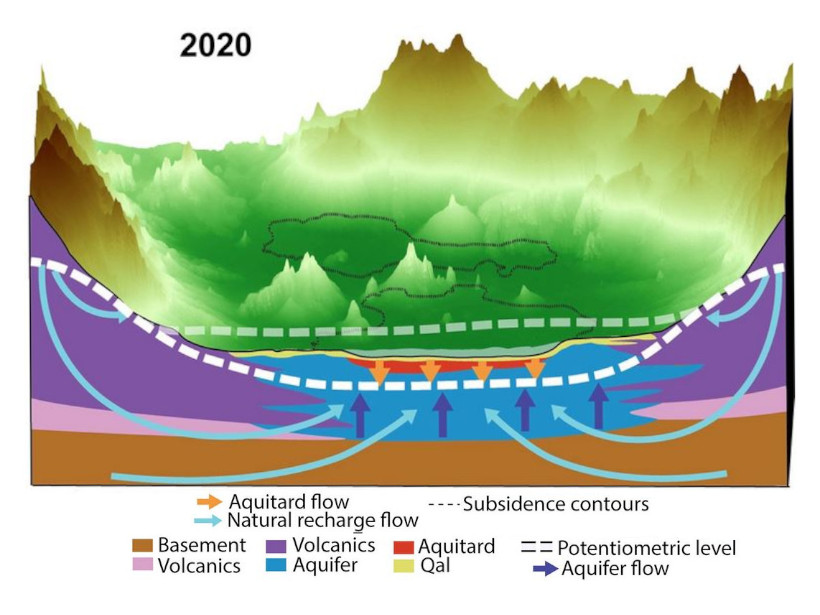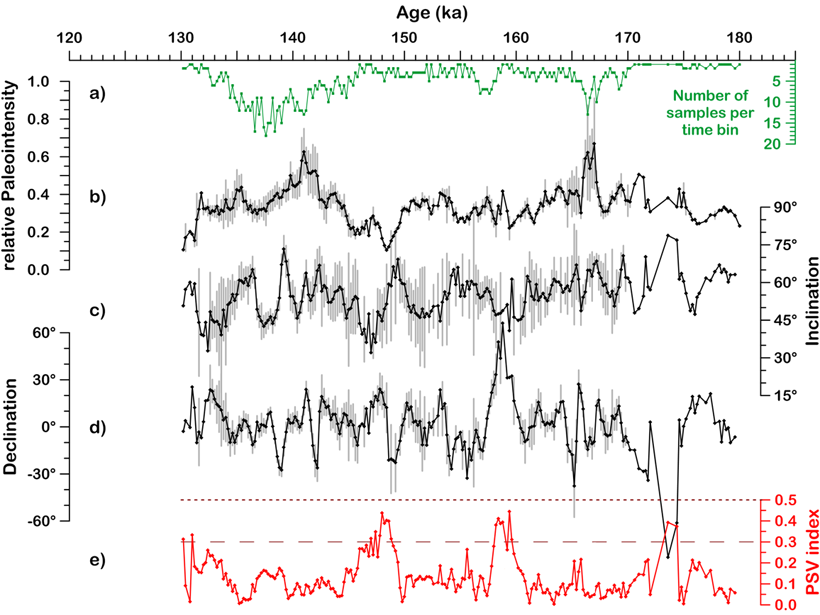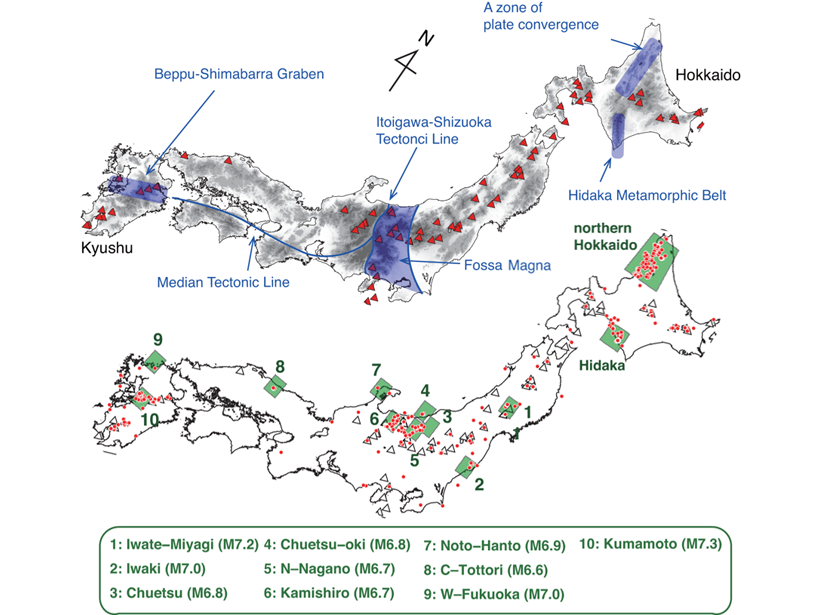Newly mapped fast velocity slabs in the lower mantle may be remnants of westward dipping intra-oceanic subduction, before flipping to the present eastward subduction beneath South America at 85 Ma.
Journal of Geophysical Research: Solid Earth
Improved Seismic Imaging Via Optimal Transport Theory
Seismic waveform inversion is inherently non-linear. New objective functions based on optimal transport theory mitigate nonlinearity yielding stable solutions without need for accurate initial models.
Magma Pockets Lie Stacked Beneath Juan de Fuca Ridge
Analysis of new imaging data suggests that vertically stacked magma chambers are short-lived and contribute to eruptions.
A New Approach to Calculate Earthquake Slip Distributions
A transdimensional, probabilistic approach is more flexible than traditional least squares fits and provides better handling of sharply varying slip distributions.
A Comprehensive Review of Submarine Volcano Seismoacoustics
Although most of Earth’s lava erupts beneath the oceans, submarine volcanoes are comparatively understudied, but a new review of submarine volcano seismoacoustics provides a framework for future work.
Understanding Where and How Magma is Stored
Gravity measurements reveal depth and storage conditions of rhyolitic magma reservoirs beneath the Laguna del Maule volcanic field in Chile.
New Spherical Cap Field Model for Europe and Direct Environs
New data on ancient burnt structures is integrated into a superior spherical cap field model for Europe.
La inminente crisis del hundimiento del suelo en la Ciudad de México
Una nueva investigación revela la causa del rápido hundimiento y fracturación del suelo de la Ciudad de México.
Marine Isotope Stage 6: First High-Resolution Field Record
A 200-year resolution record from the Black Sea for marine isotope stage 6 (130-180 ka) shows a stable geomagnetic field.
The First Systematic Search for Enervated Earthquakes
High quality data from Japan provides answers on where and when “enervated” earthquakes occur.

